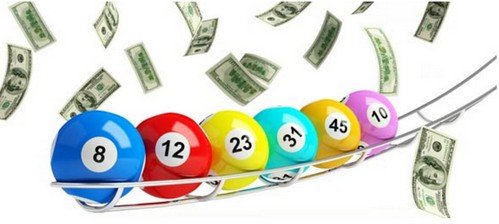Lotto and Abstract Theory
By Thomas Lumley
 There is a recurring argument in statistics departments around the world about how much abstract theory should be taught to students, and how much actual applied statistics.
There is a recurring argument in statistics departments around the world about how much abstract theory should be taught to students, and how much actual applied statistics.
One of the arguments in favor of theory, even for students who are being trained to do applied data analysis. Is that theory gives you a way to substitute calculation for thought. Thinking is hard, so we try to save it for problems where it is needed.
The current top Google hit for “big Wednesday statistics” offers a nice illustration. It’s a website selling strategies to increase your chance of winning, based on a simple message.
If you play a pattern that occurs only five percent of the time, you can expect that pattern to lose 95 percent of the time, giving you no chance to win 95 percent of the time. So, don’t buck the probabilities.
For example,
? When you select your lotto numbers, try to have a relatively even mix of odd and even numbers. All odd numbers or all even numbers are rarely drawn, occurring only one percent of the time. The best mix is to have 2/4, 4/2, or 3/3, which means two odd and four even, or four odd and two even, or three odd and three even. One of these three patterns will occur in 83 percent of the drawings.
Now, if you understand how the lottery is drawn and know some basic probability, you can tell that this advice can’t possibly work, without even reading it carefully. But if you had to explain the fallacy to someone, it might take a bit of thought to locate it. If 99% of wins have a mixture of odd and even (actually, more like 98%), why doesn’t that make it bad to choose all odd or all even?
When you have an answer (or have given up), click through for more:
It’s more likely that a mixture of odd and even will win, but there are many more such combinations, so it’s less likely that the winning combination will be the one you picked. These factors exactly cancel each other out: there are 177100 all-odd combinations, 177100 all-even combinations, and 15536500 mixed combinations.
- The chance of winning with an all-even combination is the chance that an all-even combination wins, times the chance that the one that wins is yours: (177100/15890700)×(1/177100)=1/15890700.
- The chance of winning with an all-odd combination is the chance that an all-odd combination wins, times the chance that the one that wins is yours: (177100/15890700)×(1/177100)=1/15890700.
- The chance of winning with a mixed combination is the chance that a mixed combination wins, times the chance that the one that wins is yours: (15536500/15890700)×(1/15536500)=1/15890700
If you don’t understand how the probabilities work, it might seem an amazing coincidence that these fractions cancel perfectly, but they have to cancel because we know the final answer must be the same. Thinking about how it works is harder than just knowing the probabilities are equal.
✨Disprove:
Most simply, your number choice is independent (casually, and statistically) of which ball comes out of the machine. Therefore your chance of winning is the same either way
By computation:
If you pick a different combination each time, then over a year you have 52 combinations (x4 for four lines), each with one chance to win, for a total of 52x4x1/15890700
If you pick the same combinations each week, you have 1 combination (x4 for four lines), with 52 chances to win, for a total of 1x4x52/15890700
It’s the same number either way.
ATTENTION!
Perhaps you will also find additional useful, worthy Lottery Winning Systems through our links:
- My Lottery Maximizer Breakthrough “Lotto Processor” (Richard Lustig)
- Lotto Profits – #1 NEW Lotto
- Get Free Reports on Your Lucky Days
We are here for you!
–
–



Plus, you can play right now from the comfort of your home.
Home » Lottery Systems
Play Power Play, Huge Discounts!
–










